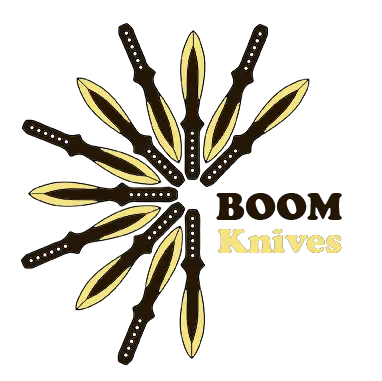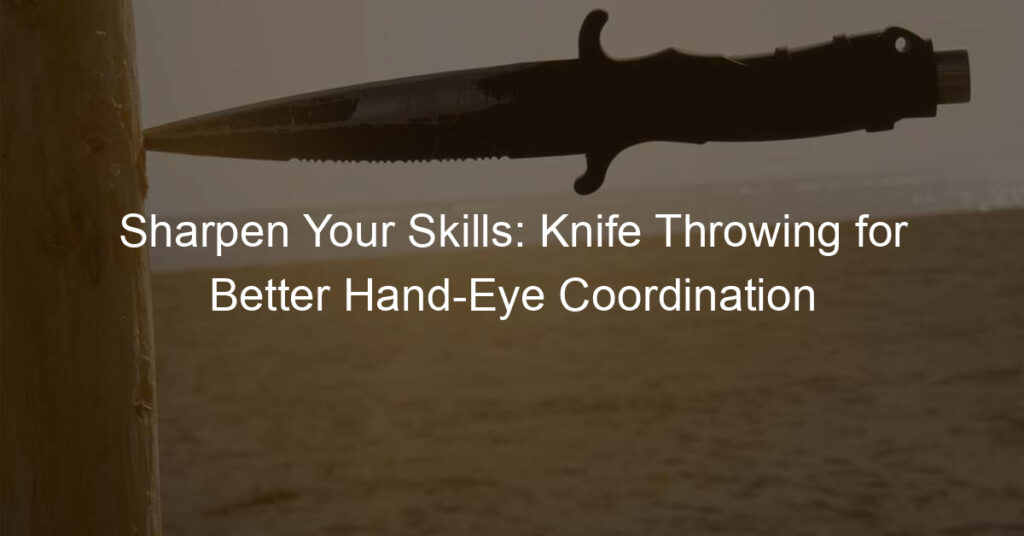Introduction to Knife Throwing
A skill that has been honed and perfected over centuries, is a fascinating blend of art, sport, and survival technique. This article will delve into the history and evolution of knife throwing, explore modern practices, and highlight the benefits of learning this unique skill.
-
- History and Evolution of Knife Throwing
Back to prehistoric times when early humans used thrown stones and later sharpened sticks as hunting tools. Over time, these primitive tools evolved into the well-balanced throwing knives we see today. The practice of knife throwing has been adopted by various cultures worldwide, from the Native Americans to the Samurai warriors of Japan. For more detailed information, you can visit Wikipedia’s page on knife throwing.
-
- Modern Knife Throwing Practices
Competitions are held worldwide, with participants showcasing their precision and skill. Modern throwing knives are typically made from a single piece of steel or other material, with the blade and handle sections proportioned to allow for a balanced throw. Techniques can vary, but most involve a specific grip, stance, and throwing motion.
-
- Benefits of Learning Knife Throwing
It can improve hand-eye coordination, increase focus and concentration, and provide a unique form of exercise. Additionally, it can instill a sense of accomplishment and boost self-confidence as your skills improve. Lastly, it’s a fun and exciting hobby that can be enjoyed at any age.
Knife Throwing Techniques
-
Basic Knife Throwing Techniques
The first step is to hold the knife correctly. The handle should be gripped firmly, but not too tightly. The blade should be pointed towards the target. The throw should be a smooth, fluid motion, with the arm extending fully towards the target. Practice is key to mastering these basics. Wikipedia has a great section on basic knife throwing techniques for beginners.
-
Advanced Knife Throwing Techniques
These include the spin throw, where the knife is thrown in a spinning motion, and the no-spin throw, where the knife is thrown without spinning. These techniques require more skill and practice, but can result in more accurate and powerful throws. For more information on advanced techniques, check out this Wikipedia article.
-
Common Mistakes and How to Avoid Them
Some common ones include throwing the knife too hard, not aiming properly, and not practicing enough. To avoid these mistakes, it’s important to practice regularly, focus on your aim, throwing a knife is about precision, not power. For a more detailed list of common mistakes and how to avoid them, visit this Wikipedia page.
Types of Throwing Knives
-
- Introduction to different types of throwing knives
-
-
- Balanced Knives: These knives have their center of gravity in the middle, making them ideal for beginners. They offer a consistent throw and are easier to control.
- Blade-Heavy Knives: In these knives, the blade is heavier than the handle. This type of knife is preferred by throwers who like to hold the handle while throwing.
- Handle-Heavy Knives: These knives have a heavier handle than the blade. They are preferred by throwers who like to hold the blade while throwing.
- Pros and cons of each type
-
| Type | Pros | Cons |
|---|---|---|
| Balanced Knives | Easy to control, Ideal for beginners | Less versatile, Not suitable for all throwing styles |
| Blade-Heavy Knives | Good for handle grip throwers, Offers more force | Harder to control, Not ideal for beginners |
| Handle-Heavy Knives | Good for blade grip throwers, Can be thrown from either end | Requires more skill, Not ideal for beginners |
-
- Choosing the right knife for your needs
If you’re a beginner, a balanced knife is a good choice as it’s easier to control. If you prefer to hold the handle while throwing, a blade-heavy knife would be suitable. Conversely, if you prefer holding the blade, a handle-heavy knife would be the best choice.
Best Knife Throwing Targets
Professional Knife Throwing Targets
- Overview of professional targets
They are usually larger, more durable, and feature clear scoring zones. These targets are made from materials like end grain wood or high-density foam, which can absorb the impact of the knife without causing significant damage. This ensures that the target remains in good condition for a long time, even with regular use. - Benefits of using professional targets
They provide a consistent surface for throwing, which can help improve your accuracy over time. Secondly, their durability means you won’t have to replace them as often, saving you money in the long run. Finally, professional targets often come with clear scoring zones, making it easier to track your progress and set personal goals. - Where to buy professional targets
Many sporting goods stores carry them, and they can also be found online. Websites like Amazon and eBay often have a wide selection of targets to choose from. Additionally, specialized knife throwing websites often sell high-quality targets designed specifically for this sport. Always ensure you buy from a reputable seller to guarantee the quality of your purchase.
DIY Knife Throwing Targets
All you need is some basic materials and a little bit of time. The first step is to decide on the size of your target. A good size for beginners is a target that is about 16 inches in diameter. Once you’ve decided on the size, you can start gathering your materials.
-
- Materials needed for DIY targets
-
-
- A piece of softwood lumber, such as pine or cedar, that is at least 2 inches thick and large enough for your target size
- A pencil and a ruler or tape measure for marking out your target
- A saw for cutting your lumber to size
- A drill and screws for assembling your target
- Paint or markers for marking your target rings
- Steps to create a DIY target
-
-
- Mark out your target size on your piece of lumber using your pencil and ruler.
- Use your saw to cut out your target. Be sure to wear safety glasses and follow all safety guidelines when using power tools.
- Once you’ve cut out your target, you can start marking your target rings. A simple target design is a series of concentric circles. The center circle is the bullseye, and each additional ring is worth less points.
- After you’ve marked your target rings, you can paint or color them in. This will make your target easier to see when you’re throwing your knives.
- Finally, mount your target on a sturdy surface. Make sure it’s at a safe height and in a location where you can throw your knives without risk of injury or damage.
Knife Throwing Target Materials
-
-
- Wood: This is the most traditional and popular material. It’s easy to source and knives penetrate it well.
- Cork: This material is softer than wood, making it easier for knives to stick. However, it may not last as long.
- Foam: Foam targets are lightweight and portable, but they may not withstand heavy use.
- Steel: Steel targets are durable but require more force to stick a knife.
- Benefits and drawbacks of each material
-
| Material | Benefits | Drawbacks |
|---|---|---|
| Wood | Easy to source, good knife penetration | Can split or crack over time |
| Cork | Soft, easy knife penetration | May not last as long |
| Foam | Lightweight, portable | May not withstand heavy use |
| Steel | Durable | Requires more force to stick a knife |
-
- Choosing the right material for your target
When choosing the right material for your target, consider your skill level, the type of knives you’re using, and how often you plan to practice. For beginners, a softer material like cork or foam may be best. More experienced throwers might prefer wood or steel for their durabilit.
Indoor vs Outdoor Knife Throwing Targets
Indoor Knife Throwing Targets
-
- Benefits of indoor targets
They allow for practice regardless of weather conditions. This means you can hone your skills year-round without worrying about rain, snow, or extreme temperatures. Second, indoor targets often have a consistent lighting condition, which can help improve your accuracy. Lastly, indoor targets can be set up in a controlled environment, reducing the risk of accidents and increasing safety.
-
- Considerations when choosing an indoor target
The size of the target should match your skill level – beginners might prefer a larger target, while more experienced throwers might opt for a smaller one. The material of the target is also important. Softwood targets, for example, are easier for knives to stick into, but they may wear out more quickly. Lastly, consider the safety of your indoor space. Ensure there’s enough room around the target to prevent accidents and damage to your surroundings.
Outdoor Knife Throwing Targets
- Advantages of Outdoor Targets
-
- Space: Outdoors, you have ample space to throw knives without worrying about hitting unintended objects.
- Realistic Environment: Practicing in the outdoors provides a more realistic environment, enhancing your adaptability to different conditions.
- Group Activity: Outdoor targets can accommodate more people, making it a fun group activity.
-
- Things to Consider When Selecting an Outdoor Target
- Weather: Outdoor targets should be weather-resistant to withstand different climatic conditions.
- Size: The target’s size should be appropriate for your skill level. Beginners might need larger targets.
- Material: The target material should be durable and capable of withstanding repeated knife impacts.
- Location: Ensure the target location is safe and doesn’t pose a risk to others.
Knife Throwing Safety Tips
- Importance of Safety in Knife Throwing
Knife throwing involves handling sharp objects that can cause serious injuries if not handled correctly. Therefore, it’s crucial to prioritize safety to prevent accidents and ensure a fun and enjoyable experience.
- Basic Safety Guidelines
-
-
- Always throw in a controlled environment away from people and pets.
- Inspect your knives before and after throwing for any damage.
- Never try to catch a bouncing knife. Let it fall and pick it up safely.
- Always wear protective gear, such as gloves and eye protection.
- Keep your throwing area clean and free of obstacles.
-
- What to Do in Case of an Accident
-
- Stay calm and assess the situation.
- If it’s a minor cut, clean the wound and apply a bandage.
- If it’s a serious injury, seek immediate medical attention.
- After any accident, review what happened and how it can be prevented in the future.
Uses of Throwing Knives
- Sport and Competition
Knife throwing is a recognized sport with various competitions held worldwide. Participants compete to see who can throw their knives with the most accuracy and precision. The International Knife Throwing Hall of Fame (IKTHOF) is one such organization that hosts these events, promoting the sport and recognizing the skills of knife throwers.
- Self-Defense
While it requires a high level of skill and accuracy, a well-thrown knife can incapacitate a threat from a distance. It’s important to note that using a throwing knife for self-defense should be a last resort and is not recommended for those without proper training. Always prioritize personal safety and consider legal implications before using a knife in self-defense.
- Recreational Activity
Many people find the act of throwing a knife at a target to be a fun and challenging hobby. It’s a great way to improve hand-eye coordination, concentration, and patience. Plus, it can be a social activity, with clubs and groups gathering to practice and share techniques.
Conclusion
- Recap of Key Points: We’ve covered a lot of ground in this blog post, from the basics of knife throwing to the different techniques, types of throwing knives, and the best targets to use. We’ve also discussed the importance of safety when practicing this skill and the various uses of throwing knives. Mastering knife throwing is understanding the mechanics, choosing the right equipment, and practicing regularly.
- Encouragement to Practice and Learn More: Knife throwing is an exciting and rewarding skill to learn. It requires patience, precision, and a lot of practice. Don’t be discouraged if you don’t get it right the first time. Keep practicing and learning. There are plenty of resources available online, including Wikipedia, where you can learn more about the history and techniques of knife throwing.







